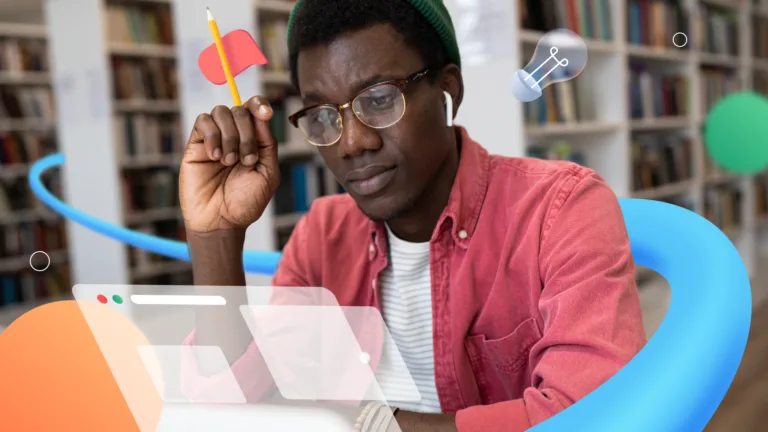Traditional brick-and-mortar classrooms are no longer the sole avenue for acquiring knowledge; instead, learning platforms have emerged as powerful tools that are reshaping the way we approach education in the digital age. These platforms, with their dynamic capabilities and wide-reaching impact, are empowering learners and educators alike, ushering in a new era of personalized and accessible education.
The Evolution of Learning Platforms
To comprehend the profound impact of learning platforms, it’s essential to trace their evolution. The transition from traditional education models to digital learning platforms was accelerated by the increasing ubiquity of the internet and the rise of e-learning. As a result, learning platforms have diversified into a myriad of formats, catering to a wide range of learners and subject matters.
From Massive Open Online Courses (MOOCs) that offer university-level education for free to specialized platforms focusing on coding, design, and other practical skills, the options are seemingly endless. These platforms have evolved beyond being mere repositories of information; they now provide immersive and interactive learning experiences that engage learners on a profound level.
Personalization and Accessibility
One of the most remarkable attributes of modern learning platforms is their ability to personalize education. Unlike the one-size-fits-all approach of traditional classrooms, digital platforms utilize advanced algorithms and machine learning to understand individual learners’ needs and preferences.
This empowers educators to tailor content and recommendations, ensuring that each learner embarks on a journey that aligns with their unique learning style and pace.
Furthermore, the digital nature of these platforms transcends geographical boundaries, making education accessible to a global audience. Learners from remote villages to bustling metropolises can now access high-quality educational resources that were once limited to a privileged few. This democratization of knowledge has the potential to bridge the educational divide and foster a more inclusive society.
Interactive Learning and Engagement
Learning platforms have redefined the learning experience by incorporating interactive elements that mimic real-world scenarios. Videos, animations, quizzes, and simulations engage learners and enhance comprehension. Video, in particular, has emerged as a cornerstone of digital education.
Video: The Learning Game-Changer
Video production, an art form in itself, has found a revolutionary application in the realm of education. The fusion of visual and auditory stimuli enhances the learning process by catering to various learning modalities. Concepts that were once abstract or difficult to grasp can now be presented through engaging video content that simplifies complex ideas.
Moreover, video fosters a sense of connection. Educators become more than distant figures; they become relatable mentors who guide learners through their educational journey. This dynamic creates an emotional bond that enhances retention and motivation.

The Power of Storytelling in Education
At the heart of video production is the art of storytelling. Narratives have a profound impact on memory retention as they provide context and emotional resonance to factual information. Educational videos that employ storytelling techniques can transform dry concepts into compelling narratives that learners remember long after they’ve completed the course.
For instance, a video about historical events can become an immersive experience by weaving together the perspectives of different individuals, adding layers of depth and understanding. This emotional engagement transcends traditional textbooks and lectures, creating an unforgettable educational experience.
Bridging the Gap: Educators and Learners
Learning platforms not only transform the way learners acquire knowledge but also redefine the role of educators. Teachers transition from being the sole disseminators of information to becoming facilitators of learning journeys. This shift allows educators to focus on guiding learners, providing personalized feedback, and fostering critical thinking skills.
Creative Collaboration is another crucial aspect enhanced by platforms. Discussion boards and collaborative projects enable learners to engage with peers globally, broadening their perspectives and nurturing teamwork skills. These platforms are cultivating a generation of independent thinkers who can thrive in an interconnected world.
Choosing the Right Learning Platform: Factors to Consider for Educational Institutions and Individuals
To make an informed choice, consider the following factors:
For Educational Institutions
- Pedagogical Alignment: Ensure that the platform supports your institution’s teaching methods and pedagogical goals. Look for features that allow for interactive and engaging learning experiences.
- Scalability: Choose a platform that can accommodate your institution’s current student body and has the potential to scale as your institution grows.
- Customizability: The ability to customize the platform to match your institution’s branding and specific needs can enhance a sense of ownership and engagement.
- Content Management: The platform should provide tools for easy content creation, uploading, and management, allowing educators to deliver a variety of learning materials effectively.
- Interactivity and Engagement: Look for features like discussion forums, quizzes, assignments, and collaborative tools that encourage student engagement and participation.
- Analytics and Reporting: Robust analytics can help educators track student progress, identify areas for improvement, and tailor their teaching methods accordingly.
- Technical Support and Training: Consider the level of technical support and training provided by the platform to assist educators in effectively using its features.
- Security and Privacy: Ensure that the platform adheres to data security and privacy regulations, especially when handling sensitive student information.
- Integration with Existing Systems: If your institution already uses other tools (e.g., Learning Management Systems, student information systems), choose a platform that can seamlessly integrate with them.
- Cost: Evaluate the total cost of ownership, including licensing fees, implementation, maintenance, and any additional features.
For Individuals
- Learning Objectives: Clarify your learning goals and objectives. Choose a platform that aligns with your educational needs, whether you’re pursuing formal education, skill development, or personal interests.
- Content Quality: Assess the quality and relevance of the courses and materials offered on the platform. Look for user reviews and ratings to gauge the effectiveness of the content.
- Course Variety: Choose a platform that offers a wide range of courses or subjects, allowing you to explore diverse topics and fields.
- Learning Format: Consider your preferred learning style—whether you prefer video lectures, interactive quizzes, written content, or live sessions—and choose a platform that caters to that style.
- Interactivity: Platforms that offer opportunities for interaction with instructors and fellow learners through discussion boards, forums, or live sessions can enhance your learning experience.
- Certification: If you need certificates or credentials upon completion, ensure the platform provides recognized certifications that align with your goals.
- Ease of Use: An intuitive user interface and navigation are crucial for a seamless learning experience. A complex platform can hinder your progress and motivation.
- Accessibility: Check if the platform is accessible across different devices (computers, tablets, smartphones) and offers offline access options.
- Cost and Value: Evaluate the pricing structure. Some platforms offer free courses, while others require subscriptions or one-time payments. Assess the value you’ll gain from the investment.
- Reviews and Reputation: Research the platform’s reputation by reading reviews, checking ratings, and seeking recommendations from peers or online communities.
Remember that the choice of a learning platform should be tailored to your specific needs and goals, whether you’re an educational institution aiming to provide quality education or an individual seeking to enhance your skills and knowledge.

Take your time to research and explore different options before making a decision. By the way, we want to share with you some notable learning platforms that were making a significant impact at that time:
The Top Learning Platforms Transforming Education Today
Coursera partners with universities and organizations to offer a wide range of online courses and degrees. It’s known for its quality content, accessibility, and partnerships with top institutions worldwide.
Similar to Coursera, edX offers online courses and degrees from universities and institutions. It focuses on providing quality education accessible to learners globally.
Khan Academy offers free educational resources, including video lessons, exercises, and assessments, covering a wide range of subjects from mathematics to the arts and humanities.
Ukrainian platform for learning a new profession, career growth, or business development
Udemy is a platform where individuals can create and sell courses on various topics. It’s known for its diverse course offerings, often taught by industry professionals.
Skillshare focuses on creative and artistic skills, offering a wide array of classes taught by practitioners in fields such as design, photography, writing, and more.
Duolingo is a popular language learning platform that gamifies the language learning process, making it engaging and accessible to a wide audience.
MasterClass offers video lessons from accomplished experts in various fields, giving learners the opportunity to learn from some of the world’s best.
Pluralsight specializes in technology and IT skills, providing courses on programming, cloud computing, cybersecurity, and more.
Conclusion
Learning platforms have ushered in an era where education transcends the confines of physical classrooms. The marriage of technology and education has resulted in a paradigm shift that emphasizes personalization, accessibility, and engagement.
Video production, a central element in this transformation, has breathed life into educational content, turning it into immersive and memorable experiences.
As we embrace the digital age and its endless possibilities, it is crucial to recognize that learning platforms are not a replacement for traditional education but a powerful complement. They offer educators and learners a rich tapestry of tools to create, explore, and expand the boundaries of knowledge.
Through understanding, embracing, and harnessing the potential of learning platforms, we can truly empower education in the digital age.









